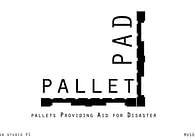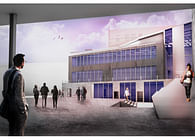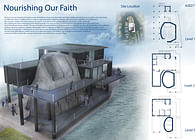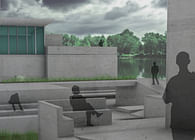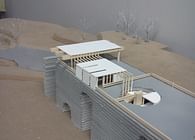
The project consisted of a case study to be done on a housing project. From the case study, I determined the housing typology, programmatic elements, circulation and unit adjacency and layout, by recreating plans, sections and axonometric drawings, and a sectional model. The purpose of the project was to better understand housing typology and unit adjacency within a housing project and determine the pros and cons of the project and apply it to our own housing design.
The project I chose was the Narkomfin Apartments, located in Moscow, Russia, designed by Moses Ginzburg and Ignaty Milinis during the Constructivist Movement in Russia while they were under control by the USSR.
Housing Typology:
-Slab Building, Single Orientation Units, Single Loaded Corridors every third floor.
Description:
The Narkomfin Apartments were built during the Constructivist movement in Russia under the control of the USSR. The project pushed a progressive change in housing, moving from family housing to collective communal housing. This avant-garde type of architecture wanted to promote a socialist way a living, by emphasizing people to occupy public places rather than being withheld to their individual households. The intent of the design was to reduce the size of an individual apartment unit and promote a communal style of living.
The model unit was separated vertically, where the bedrooms were located in the upper portion and the living and kitchen area located in the lower portion. The kitchen space within each apartment was minimal to insure the use of the communal facilities. The apartment complex consists of two different types of living spaces, “type K” and “type “F”. Each living space was designed for different styles of living. The first, type “K” were for families, allowing more room for a larger amount of people and ample space to cook. The second type, type “F” were better suited for single or smaller groups of people, who wanted to embrace a greater communal living style. This apartment unit contained smaller spaces to eat and cook.
The building is a single orientation consisting of a single loaded corridor at every third floor, in order for natural light to enter the one side of the building. The apartments were desgined for the workers at the Russian Ministry of Finance. The building is a slab raised off the ground by pilotis, both the top and ground floors of the apartment were used for communal living, while the floors in between contained long corridors and two level apartments. The long interior corridor connected another block building to the apartment, which was also used for the public, containing kitchen, dining hall, and library. This project was not only a progressive step toward a new architecture, but it tried to shape the inhabitants manners and values by instilling a collective and communal behavior, in an attempt to alter social norms.
Status: School Project
Location: Moscow, RU
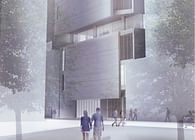




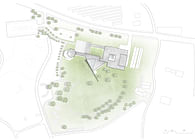
![Internal [PRO] jection Internal [PRO] jection](https://archinect.gumlet.io/uploads/6f/6f8dxonhxdpfhxpz.jpg?fit=crop&auto=compress%2Cformat&enlarge=true&crop=entropy&w=195&h=140)
